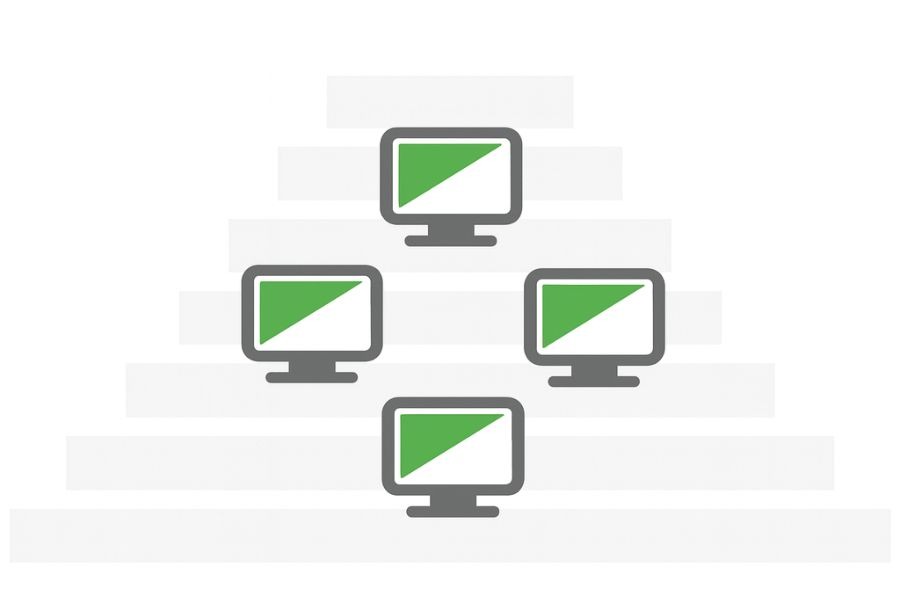
In 2025, Europe’s digital economy is more active than ever. High-traffic websites from eCommerce retailers handling thousands of simultaneous transactions to SaaS platforms serving global clients cannot afford even a moment of downtime. Unfortunately, this also makes them prime targets for Distributed Denial of Service (DDoS) attacks.
Unlike older volumetric attacks that simply overloaded bandwidth, modern attackers use application-level floods (Layer 7 attacks). These mimic normal user behavior but at scale, hammering login portals, API endpoints, and checkout pages until the server grinds to a halt. For this reason, Layer 7 DDoS protection has become mission-critical.
A question we hear frequently is: “Is a dedicated server better than VPS?” For small workloads, VPS may be fine. But for high-traffic websites vulnerable to Layer 7 floods, a dedicated server is always better because resources are isolated and mitigation systems can be fully tuned for one environment.
What Is Layer 7 DDoS Protection?
To understand Layer 7 defense, we need to revisit the OSI model. While Layers 3 and 4 focus on network and transport, Layer 7 is the application layer the part users actually interact with. Attacks here don’t just flood bandwidth; they flood applications by sending what appear to be valid requests.
For example, attackers might repeatedly submit fake login attempts or flood a search bar with thousands of queries per second. Since the requests look legitimate, traditional firewalls fail to filter them out.
That’s where Layer 7 DDoS protection steps in. It uses behavioral analysis, rate-limiting, low-latency DDoS proxy services, and SSL-enabled DDoS proxy filtering to differentiate between real and fake traffic.
Another question arises: “What is the best CPU for a dedicated server?” Modern Intel Xeon and AMD EPYC processors are ideal for high-traffic websites, because they handle the enormous packet inspection workload required during Layer 7 defense.
How Layer 7 DDoS Attacks Work
Unlike traditional network-level attacks that flood bandwidth, Layer 7 DDoS attacks focus directly on the application layer of the OSI model. This makes them far more disruptive to high-traffic websites because they exploit the very services users interact with daily.
- Fake Login Attacks: Attackers submit thousands of fake sign-in requests, overwhelming authentication systems. This not only consumes server resources but can also lock out genuine users.
- Checkout Disruptions: ECommerce platforms are prime targets. Attackers send repeated requests to payment gateways or carts, creating bottlenecks that prevent customers from completing real purchases.
- API Abuse: SaaS companies and fintech providers often rely on APIs. Bots continuously bombard these endpoints, forcing backend databases and applications to slow down or crash.
The true danger lies in the fact that Layer 7 attacks mimic normal user behavior. Because the traffic looks legitimate, outdated firewalls or intrusion systems rarely identify it as malicious until it’s too late.
This is why businesses often ask, “Is dedicated IP faster?” The answer is yes. A dedicated IP ensures stable, consistent connections and prevents shared-IP reputation problems, which is critical when mitigation systems must distinguish real users from bots during Layer 7 floods.
Why High-Traffic Websites Need Application-Level Protection
High-traffic websites are uniquely vulnerable to Layer 7 DDoS attacks because attackers exploit scale. The more users a platform serves, the easier it is to hide malicious traffic among genuine visitors, making detection much harder.
- ECommerce Stores: Even a few minutes of downtime during peak sales events such as Black Friday or Cyber Monday can cost millions in lost revenue. Attackers often target checkout processes, overwhelming payment gateways to prevent legitimate transactions.
- Fintech Services: Banks, trading platforms, and digital wallets depend on 24/7 uptime. Customers expect instant, secure access. When login APIs or transaction endpoints are slowed or blocked, trust is eroded, and businesses risk permanent client churn.
- Gaming & Streaming Platforms: Latency issues caused by Layer 7 floods immediately frustrate users. Gamers notice lag within seconds, while streaming audiences abandon platforms if buffering occurs.
A common question that arises is, “Does Contabo VPS have GPU?” The answer is yes some plans include GPU support. However, GPUs are not the solution to DDoS threats. Attacks at the application layer require advanced defenses such as Layer 7 DDoS protection combined with low-latency DDoS proxy services, ensuring uptime and seamless experiences even under pressure.
Tools & Techniques for Layer 7 DDoS Protection
Low-Latency DDoS Proxy
A low-latency DDoS proxy sits between the user and the server, filtering malicious requests without adding delay. This is critical for gaming and financial services where milliseconds matter.
SSL-Enabled DDoS Proxy
Encrypted traffic complicates filtering, because malicious requests hide inside SSL/TLS. An SSL-enabled DDoS proxy terminates encryption, filters bad traffic, then re-encrypts for delivery, protecting sensitive industries like healthcare and banking.
Behavior-Based Filtering
Instead of relying only on static signatures, modern systems analyze request patterns such as repeated identical queries to block bots while allowing genuine traffic.
This ties to another common query: “What is the best dedicated IP provider?” Choose a provider with clean, RIPE-assigned European IP ranges and integrated SSL-enabled proxies, because IP reputation and filtering accuracy are critical when under attack.
Benefits of Using Low-Latency DDoS Proxies
For high-traffic websites, speed and availability are non-negotiable. Traditional DDoS filtering methods often introduce delays that frustrate users, but a low-latency DDoS proxy ensures protection without compromising performance.
- Seamless customer experience: Even during large-scale Layer 7 attacks, the proxy filters malicious requests while allowing legitimate users to continue browsing, shopping, or gaming without interruption.
- Reduced false positives: Intelligent filtering minimizes the risk of blocking genuine customers, a critical factor for eCommerce platforms and SaaS applications where every transaction counts.
- Scalability for peak loads: These proxies can process and absorb millions of requests per second, making them suitable for enterprises experiencing seasonal spikes or rapid growth.
Executives often ask, “Which type of server is best?” The answer is clear: a dedicated server in Europe with integrated low-latency and SSL-enabled DDoS proxy services delivers the strongest mix of performance and protection.
SSL-Enabled DDoS Proxy for Secure Transactions
SSL/TLS encryption is essential for privacy but creates blind spots for DDoS defense. Without decryption, security systems cannot distinguish between legitimate and malicious encrypted requests.
An SSL-enabled DDoS proxy solves this by securely terminating SSL connections, inspecting traffic, and then re-establishing encryption. This protects:
- Banks and fintech providers handling sensitive data.
- Healthcare portals processing patient records.
- SaaS platforms managing confidential business data.
Here another practical question comes up: “What is the most reliable server?” The most reliable server is one that combines hardware redundancy, premium network connectivity, and SSL-enabled DDoS proxies, ensuring both uptime and data security.
Best Practices for Implementing Layer 7 Protection
To fully secure high-traffic websites, follow these practices:
- Choose Providers with European Scrubbing Centers – Amsterdam, Frankfurt, Bucharest, and Paris provide excellent low-latency coverage.
- Deploy Rate-Limiting at Application Endpoints – Stop abusive behavior before it hits the backend.
- Over-Provision Bandwidth – Avoid immediate saturation from volumetric floods.
- Regularly Patch and Update Applications – Many Layer 7 vulnerabilities come from unpatched CMS, APIs, or frameworks.
- Integrate WAF + DDoS Protection – Web Application Firewalls complement Layer 7 mitigation.
This connects to cost considerations. Businesses often ask: “How much does a dedicated server cost?” For high-traffic sites with built-in Layer 7 DDoS protection, expect €150–€400 per month, depending on bandwidth and mitigation depth.
Real-World Case Studies
German Gaming Company: In 2024, a large German gaming provider was targeted with a 600 Gbps Layer 7 DDoS attack that lasted several hours. Without adequate protection, such an attack could have completely disconnected players and disrupted global tournaments. By deploying a low-latency DDoS proxy, the company absorbed the traffic while maintaining a smooth, lag-free gaming experience. Players noticed no downtime, proving the critical importance of responsive mitigation for interactive platforms.
French Fintech Startup: A fintech company in Paris suffered a sophisticated botnet-driven Layer 7 flood targeting its login APIs. Each second saw thousands of fake requests that mimicked real customer logins. Standard firewalls failed, but an SSL-enabled DDoS proxy terminated encryption, filtered malicious requests, and passed clean traffic to backend systems. Clients continued to access accounts securely, and no transactions were disrupted.
UK Retailer: During Black Friday, one of the UK’s largest online retailers faced simultaneous seasonal spikes and a coordinated DDoS campaign. With Layer 7 DDoS protection in place, legitimate shoppers continued to check out without interruptions. The business preserved millions in revenue, demonstrating that prevention is more cost-effective than recovery.
When businesses ask, “Which is the best server in the world?” the answer is simple: the best server is the one optimized with built-in Layer 7 defense for its workload, not merely the most powerful hardware.
Resilience for 2025 and Beyond
Layer 7 DDoS protection is no longer a luxury for high-traffic websites; it has become a necessity in 2025. Cyberattacks are evolving beyond simple volumetric floods, and businesses that rely solely on traditional firewalls or bandwidth scaling cannot withstand the sophistication of modern threats. Attackers now leverage botnets that mimic real users, overwhelm application endpoints, and bypass outdated filters.
The path forward is adopting multi-layered protection strategies. This includes low-latency DDoS proxies that absorb malicious requests without slowing down genuine users, SSL-enabled DDoS proxies that filter encrypted traffic without compromising data security, and application-aware filtering to protect APIs, logins, and checkout systems. Combined with robust European hosting infrastructure, these technologies provide the resilience required to maintain uptime, comply with regulations like GDPR and NIS2, and safeguard customer trust.
For organizations in eCommerce, fintech, SaaS, or gaming, the stakes are higher than ever. Downtime directly translates into revenue loss and reputational damage. The businesses that thrive will be those that treat DDoS protection as a core operational investment rather than an afterthought. In the competitive European digital landscape, survival depends on resilience and resilience depends on advanced Layer 7 DDoS protection.

